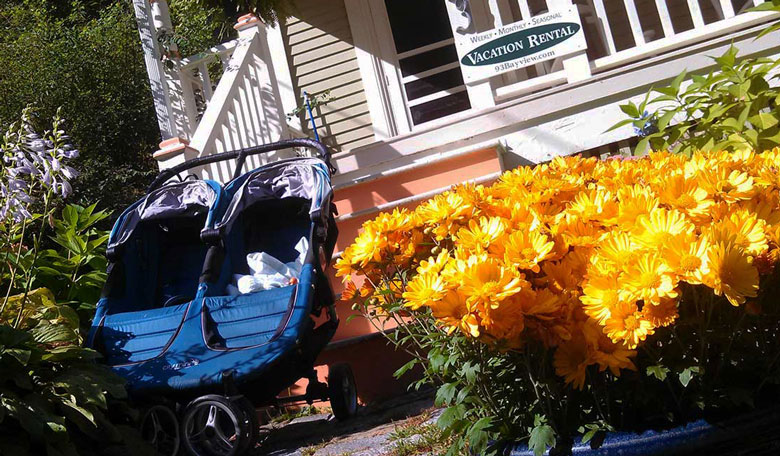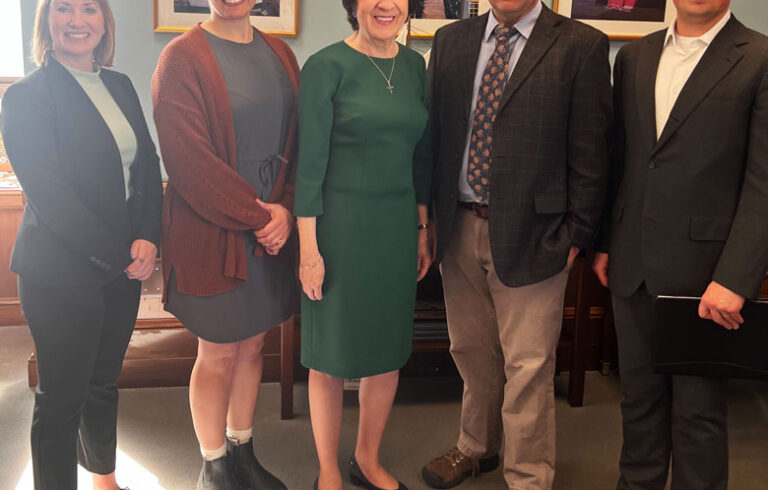Short-term rentals have a long and storied history in Maine’s coastal communities. On Mount Desert Island, for example, many families who “head up to camp” each summer rent their homes to seasonal visitors to earn extra income. In communities like Peaks Island and Deer Isle, families have long offered rustic cabins—without heat or insulation—to summer tourists seeking a few weeks on the seaside.
But planning officials say that since the COVID pandemic first struck, changes to both the nature and quantity of short-term rentals have become problematic. Today, houses historically used as year-round residences are being converted to short-term rentals, marketed on platforms like Airbnb and VRBO. Investors are buying properties, sight unseen and above asking prices, and in some cases, dislocating existing renters.
As a result, coastal towns that once absorbed the influx of tourists and seasonal residents without disruption now fear they could turn into clusters of vacation-only houses that go dark in the fall. Beyond empty neighborhoods, the trend may be making it harder and more expensive for workers to get to their jobs, undermining the local economy.
“There’s demonstrated evidence that there’s a relationship between the increasing number of vacation rentals and the increase of the cost of housing.”
—Michele Gagnon of Bar Harbor
“We saw a lot of year-round renters being kicked out, evicted continuously out of their properties,” Bar Harbor Planning Director Michele Gagnon says. “We also had testimony of a lot of people not being able to find housing and therefore living in situations that were less than ideal… People living in closets, to cars to a large number of people in one room just trying to figure it out.”
Beyond the impacts to individuals, some fear that growing numbers of short-term rentals may threaten the year-round sustainability of the communities themselves.
“What are we going to do here on MDI if you don’t have people here in the wintertime to go to the schools or shop at the local grocery store and keep that open?” asks Noel Musson, a planner who is helping Tremont and Mount Desert look at options to regulate short-term rentals. “If you can’t go out to lunch in the wintertime when you want to have a business meeting because everything is closed—when places are only open here open in the tourism season—that changes the nature of a community.”
Gagnon is careful not to place all the blame for the town’s housing shortage—a recent study projected a need for more than 600 additional units through 2035—at the feet of short-term rentals. COVID also boosted the number of buyers looking for year-round homes on Maine’s coast, depleted the construction industry’s workforce, and drove up the cost of building materials, all of which inflated the cost of housing.
But she argues that with an already-tight housing market in place, the new investor-driven approach to short-term rentals, which now number about 700, acted like accelerant tossed onto a fire.
“There’s demonstrated evidence that there’s a relationship between the increasing number of vacation rentals and the increase of the cost of housing,” she observes. “It’s kind of like a perfect storm that happened.”
CLAMPING DOWN
In response, Bar Harbor voters approved new restrictions on short-term rentals in 2021. In addition to requiring registration and $250 annual permits, the rules distinguish two types of vacation rentals.
“A VR1 is someone’s primary residence. It’s the place that they can demonstrate that they are a registered voter at, or it’s the address on their driver’s license, their tax return,” explains Angie Chamberlain, Bar Harbor’s code enforcement officer. “Whereas VR2s are for property owners where it’s not their primary homestead.”
While all property owners with existing short-term rentals were grandfathered in, a resident can apply for a new VR1 permit that allows up to two units on their property. VR2 permits have a hard cap, and Chamberlain said no new VR2 registrations have been issued since the rules went into effect.
Like Bar Harbor, Stonington residents passed a restrictive ordinance by a 2-1 margin in 2023. It also grandfathered in existing owners, if they renew registrations and pay fees annually but established a 1,000-foot setback for any new short-term rental.
“While we have always had seasonal rentals, the pandemic shifted the balance.”
—Linda Nelson of Stonington
“Our goal is to keep this a working waterfront community,” says Linda Nelson, the town’s economic and community development director, who adds that there are about 130 short-term rental units in town. About 50 percent of all homes in Stonington’s downtown are now owned by seasonal residents and is 80 percent of the town’s waterfront. “What this means is we no longer control our most valuable asset… While we have always had seasonal rentals, the pandemic shifted the balance. Everyone likes to say that the market will correct itself, but it takes policy to correct an imbalanced market.”
Not everyone in Stonington thinks the ordinance is going to rebalance the ownership scales.
“It largely serves as a moratorium on short-term rentals,” says Morgan Eaton, owner of The Island Agency, a Stonington real estate and rentals company. “We’re scapegoating SROs, but this approach will not lead to more affordable housing. The properties that are selling, especially on the water, will never be ‘affordable’ in that sense.”
Eaton, who served on a town committee charged with developing the ordinance, said instead of trying to manipulate the existing home market, Stonington should focus on creating more opportunities. She noted the town is moving in that direction but suggested that rental permit fees might be dedicated to a housing fund, encourage subdivisions, and plan for more growth.
CHALLENGES AHEAD
Other coastal towns such as Cape Elizabeth and Kennebunkport have also enacted similar rules, while Camden voters will have their say on an ordinance on June 11. In general, Maine’s short-term rental ordinances all require registration, safety rules, and permit fees at a minimum. The more restrictive have put a freeze on new units.
James Myall of the Maine Center for Economic Policy expects to see more towns experimenting with these ordinances, but he is hesitant to endorse highly restrictive approaches as the solution to more affordable and available housing.
“In general, short-term rentals and Airbnb are not the driving force in Maine’s statewide housing crisis,” he says, noting that a report in April called for the creation of 80,000 new housing units just to meet present demand. “Taking a registration approach, as opposed to banning them, is probably the right track.”
Myall said that there was no noticeable increase statewide in the number of seasonal homes between 2010 and 2020, and that of those, only a single-digit percentage could be repurposed for year-round occupancy.
But he acknowledged that existing data is obscured for two reasons—first, it doesn’t capture trends occurring over short periods of time, and second, statewide data can flatten out areas where activity is well-above, or well-below, the average.
“In Maine, housing policy is intensely local,” he adds, pointing out the impacts of comprehensive plans, zoning rules, setback requirements, and review processes. “It makes it hard not to push problems around.”
Gagnon, the Bar Harbor planning director, agrees.
“The fact that we took those decisions, that created a ripple effect,” she says. “So now you’re pushing the problem somewhere else—not that that’s what you intended to do, but you’re pushing the problem to other municipalities on the island and off island.”
Is a regional approach possible? Noel Musson thinks so.
“We say here on MDI, not every single town needs to solve the housing problem by itself. We are a larger community, and we all need to work together to figure out how to solve this problem in ways that are appropriate for the whole island, or even from Ellsworth to MDI,” he explains. “So that maybe some towns fill a different need, maybe a little less density. Whereas Bar Harbor or Southwest Harbor—towns with a village and public infrastructure—can create more density or tolerate more density. There’s a lot of tools in the toolkit. You just have to be proactively open to using those tools.”





